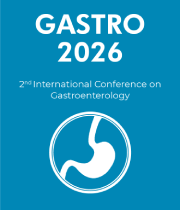Biliary Colic
Biliary Colic is a condition characterized by severe abdominal pain in the upper right side of the abdomen, usually caused by gallstones or inflammation of the gallbladder. The pain is usually felt around the navel or just below the right shoulder blade and can last up to several hours. This condition is also known as biliary tract pain, gallstone colic, or cholecystitis. Biliary Colic occurs when a gallstone becomes lodged in the opening of the gallbladder or bile duct, blocking the flow of bile. Bile is a fluid produced by the liver to help break down fat in the small intestine. When it is blocked, the pressure builds up in the gallbladder, causing intense pain. Other symptoms may include nausea, vomiting, fever, and jaundice. The most common causes of Biliary Colic are gallstones and inflammation of the gallbladder. Gallstones are hard, pebble-like deposits of cholesterol, bile salts, and calcium that form in the gallbladder. When these stones become lodged in the bile duct, they can block the flow of bile and cause pain. An inflamed gallbladder can also cause Biliary Colic. This can be caused by an infection, such as a bacterial infection, or by a tumor in the gallbladder. The diagnosis of Biliary Colic is usually made through a physical examination and imaging tests, such as an ultrasound, CT scan, or MRI. These tests can help determine the size and location of the gallstones and the degree of inflammation of the gallbladder. Treatment for Biliary Colic typically involves a combination of medications, lifestyle changes, and surgery. Medications used to treat Biliary Colic include pain relievers, antibiotics, and anti-inflammatory drugs. Lifestyle changes such as reducing fat and cholesterol intake, increasing fiber intake, and exercising regularly can help reduce the risk of developing gallstones. Surgery may be necessary to remove the gallstones or to repair or remove the gallbladder if it is damaged. Biliary Colic can be very painful, but it is usually not a serious condition. If you are experiencing abdominal pain, it is important to see a doctor to get a diagnosis and treatment. With the right treatment, Biliary Colic can be managed and the pain can be relieved.



